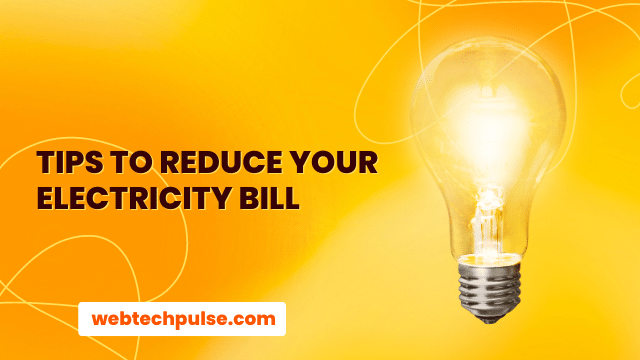A high electricity bill can cause stress. Luckily, some simple ways exist to reduce energy use and save money.
Electricity rates can change depending on the day, so take advantage of off-peak times. Also, use a smart power strip to reduce “vampire loads” that can drain your wallet, like TVs, computers, coffee makers, and chargers.
Turn off the lights when you’re not using them
Leaving lights on is not only a waste of energy but also a waste of money. Turning off the lights when not using them can save money and help preserve our planet.
Depending on the bulb type and your per-kWh electricity rate, turning off the lights can be very cost-effective. For example, a 60W incandescent lightbulb costs about $0.06 kilowatt-hours (kWh) to operate for one hour. The total operating cost of ten hours for this lightbulb is about $5, which you can easily offset by switching to more efficient bulbs or turning the lights off.
Moreover, the number of times you turn your lights on and off can affect their life span and thus influence the total operating costs over time. Hence, it’s essential to be conscious of this. In addition to turning off the lights, other energy-saving habits like unplugging devices that are not in use and using smart power strips can also reduce energy bill.
Change your light bulbs
Changing the light bulbs in your home is one of the most low-cost, high-reward energy efficiency upgrades you can undertake. It doesn’t require any infrastructure changes, it’s easy to do, and it yields immediate cost savings (the average household saves 225 dollars annually) and meaningful reductions in our carbon footprint.
Energy-efficient light bulbs use 80% to 85% less electricity than their incandescent counterparts. They also last up to 23 times longer and don’t produce any heat, which can help reduce your energy consumption by lowering the temperature of your room.
An average 40-watt bulb will use 0.04 kWh in an hour. That’s enough to make a difference in your electricity bill at the current energy prices. The cost of LED bulbs has also decreased significantly over the past couple of years, so you’ll likely make up for the initial expense within a few months. Then you’ll continue saving year after year. You can even replace specialist halogen bulbs in ovens and cooker hoods with LED ones. That would cut carbon dioxide emissions by up to 40kg (50kg in NI) per year, equivalent to driving your car around 145 miles.
Turn off the air conditioner
The best way to reduce your electricity bill is to turn off your air conditioner as soon as you’re done using it. However, if you have old leaky windows, doors, or skylights that let in cool air, sealing them with temporary adhesives is a good idea. This will keep the cool air from escaping and prevent your AC from overusing, lowering your electricity bill.
Another energy-saving move is to raise your home’s temperature during the day when you’re away from work or school. According to studies, the higher the temperature in your home, the less energy it will use to cool down.
Some homeowners worry that raising their air conditioning temperatures will cause their electricity bills to rise, but the truth is that it won’t. You’ll save about 6 percent electricity for every degree you raise your thermostat setting. This can make a huge difference in your home’s electricity usage and your bill. Ceiling fans circulate cooler air, which uses a fraction of the central AC’s energy.
Install a programmable thermostat
With a programmable thermostat, you can easily adjust your heating and cooling settings based on your daily routine. It will save you money by turning off your heating and cooling when nobody’s home and setting it to a lower temperature at night while you sleep or are away from the house.
Depending on your budget, you can choose between a simple digital programmable thermostat allowing you to set multiple heating/cooling programs for each day of the week or a more high-tech smart thermostat that syncs with devices to access it remotely. Smart thermostats also allow you to save energy by turning off heating or air conditioning when your house is empty.
Remember that it’s essential to take a little time to test out your new programmable thermostat and find the best settings for you. Start with a temperature you think will be comfortable, then dial it up or down gradually over a few days until you’ve found the perfect temperature.
Install a water heater
Water heating uses up a significant portion of your home’s energy. So, cutting back on your hot water consumption is a great way to save money and energy.
For example, taking shorter showers can reduce your electric bill. This is because you’ll be using less electricity to heat the water. Another way to cut your electricity bills is to ensure your water heater is insulated. This is especially important if exposed water pipe lengths extend away from your water heater. Insulating these pipes will help keep the heat from escaping your house.
Installing a new electric water heater is also a great way to save energy and money. But before installing your new water heater, shut off the water and power to the old unit. You can do this by turning off your utility room’s circuit breaker and removing the access panel on your old electric water heater. Once you remove the access panel, you can begin connecting the electrical supply to the new water heater following your instruction manual closely.












